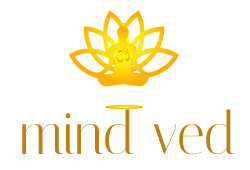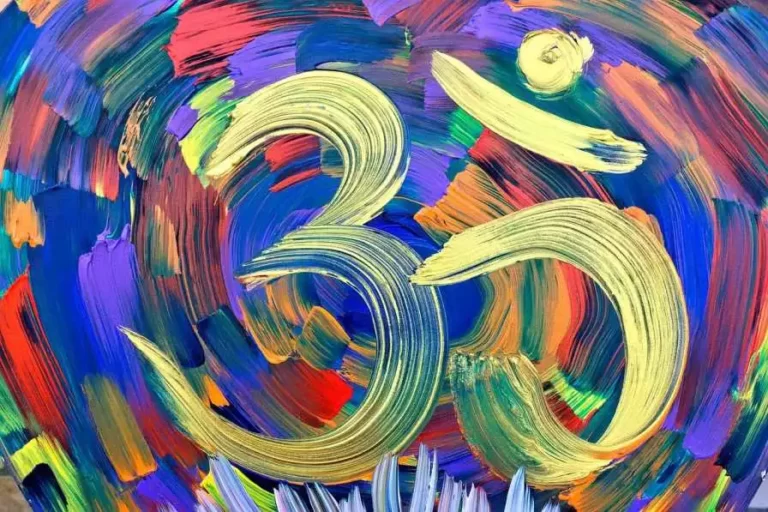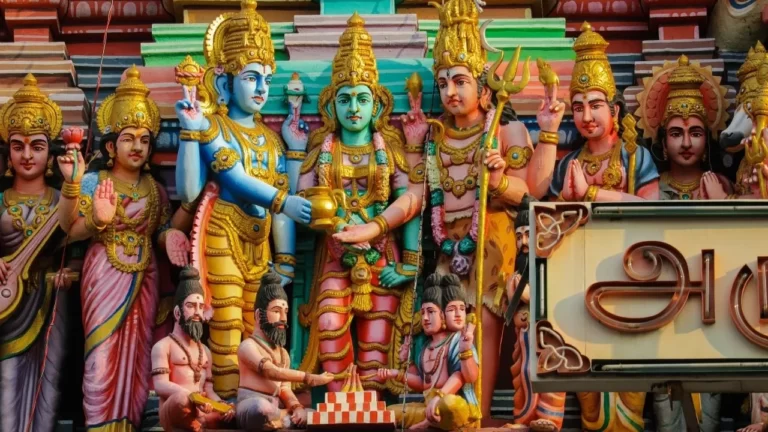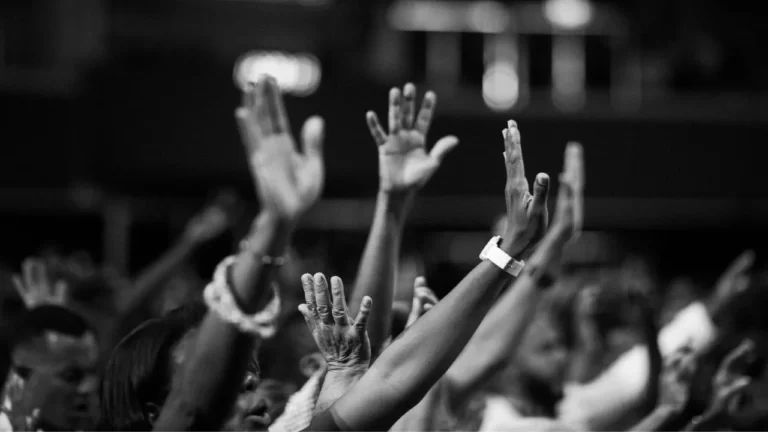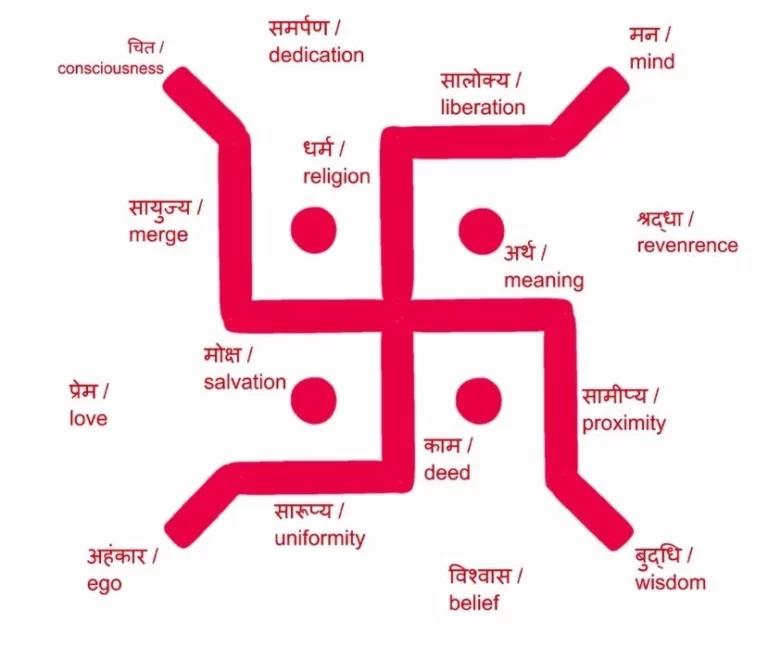Hinduism Symbols and Meaning
Hinduism is the world’s oldest and the third- largest religion. Diverse religious, cultural, and philosophical practices are the essence of Hinduism.
Hinduism symbols are the fundamental part, which represents the philosophies, teachings, omen, God and goddesses, spiritual meaning based on the scriptures or culture.
In Hindu iconography, several iconic symbols are used which have specific meanings and are used on religious occasions.
The Hindu symbols are mainly categorized into Murti & Mudras. Murti is an image, statue, or idol of deity while Mudras are symbolic or ritual gestures or pose.
Some mudras involve the entire body and some are performed with hands and fingers. It is believed that the symbols are auspicious and bring positive vibes.
Here, Mindved is providing a comprehensive list of common and sacred Hinduism symbols and the meaning behind them.
Hinduism Symbols
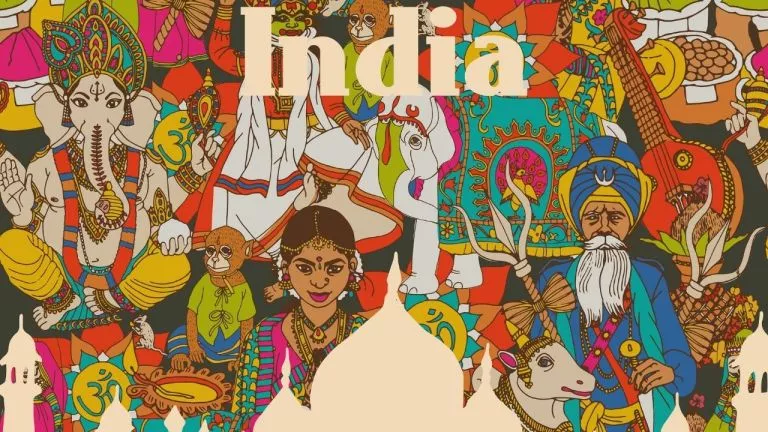
AUM (pronounced as OM)
It is a universal Hinduism symbol that is also considered a primal sound heard at the time of the creation of the universe. It is believed that this symbol represents the three aspects of God- the Brahma (A), the Vishnu (U), and the Shiva (M). The sound of chanting AUM is used in meditation. It is a root mantra- most of the Hindu mantras start with AUM.
The symbol AUM/OM has three curves, the crescent, and a dot. The large lower curve represents the ordinary waking state of consciousness; the upper curve represents deep sleep (unconsciousness state); the lower curve represents the dream state (which lies between deep sleep and the waking state).
The dot represents the absolute state of consciousness which illuminates the other three states, and the crescent is the illusion or the Maya which is believed to prevent us from reaching the highest bliss state.
Swastika
In India, the Swastika symbol is widely used in Hinduism, Buddhism, and Jainism. The swastika symbol is either right-facing form or the mirrored left-facing form. The right-facing symbol known as Swastika symbolizes Surya (Sun), prosperity, and good luck. And the mirrored left-facing form is known as Sauwastika and is used as a symbol of magic, night, and the goddess Kali.
All four directions of four Swastika arms describe four Vedas and signify the Absolute’s eternal nature. This symbol represents peace, honesty, truth, purity of the soul, spirituality, and stability. It is used on Kalash, walls of temples, doors & thresholds, account books, etc.
The Sri Yantra
A Yantra meaning a device but in Hinduism, a symbol of the yantra is a geometrical figure or design developed for worship, meditation, and spiritual advancement.
Each design element of the Sri Yantra has specific significance. The dot or the Bindu at the center of Sri yantra represents the source of the universe. The yantra has 9 triangles that radiate from a central point and interlock. Out of the 9 triangles, 4 are upright which are thought of being the masculine (Shiva), while the other 5 are inverted and represent feminine aspects (Shakti).
The Sri Chakra depicted the unity of the masculine and the feminine divinity. The interlocking of triangles creates a web of 43 smaller triangles which housing a particular deity that represents a specific aspect of existence.
Lotus (Padma):
In Hindu mythology, the lotus arouses from the navel of Lord Vishnu, and Lord Brahma sat at the center of the flower. Many deities namely Laxmi, Saraswati, Kubera, etc. have the lotus throne to sit on. This flower is a symbol of eternity, purity, enlightenment, and good fortune.
The beautiful Lotus flower is rooted in the mud and water but it remains clean and floats high on the water. It indicates untouched beauty, detachment, and spiritual enlightenment.
Different colors of the lotus flower have different names such as pink lotus (Padma), red lotus (Kamala), white lotus (Pundarika), and blue lotus (Utpala).
The human body has 7 chakras- energy points. Each chakra is depicted as a lotus flower with a different number of petals. As the frequency of energy increases, the number of petals of the lotus flower increases.
Root chakra depicted by a red lotus with 4 petals, Sacral chakra depicted by an orange lotus with 6 petals, Solar Plexus chakra depicted by a yellow lotus with 10 petals, Heart chakra depicted by a green lotus with 12 petals, Throat chakra depicted by a blue lotus with 16 petals, Third eye chakra is depicted by a purple lotus with 96 petals and Crown chakra is depicted by a white lotus with 1000 petals.
The Shiva Lingam
The Shiva Lingam represents Lord Shiva in Hinduism. The Shiva lingam is the emblem of the generative power of all the existence, creativity, and fertility at a cosmic level. The upper oval part of the shiv lingam is called ‘Parashiva’ and the lower part is called ‘Parashakti’. This symbol is also described as a union of the feminine and the masculine principles.
Also, complete shiv lingam is divided into 3 parts – Brahma peetha, Vishnu peeta, and Shiva peetha.
Brahma Peeta is the part that touches the ground, it represents the creation of the universe. Vishnu peetha is the middle part that has an elongated bowl-like shape, which represents the preservation of the universe. And Shiva Peeta is like a round head in the middle of the bowl, represents the destruction of the universe.
Ganesha
Ganesha is the son of Lord Shiva and Goddess Parvati, known as the remover of the obstacles. He is worshipped at the beginning of any ceremony or rite.
Ganesha has a big body and elephant head. The big belly represents generosity and total acceptance.
The elephant head is a symbol of knowledge, wisdom, and understanding. Large ears to listen more. The small eye and mouth symbolize the importance of less talk, concentration, and attention. A large trunk symbolizes change, flexibility, and adaptability.
Four arms symbolize the inner attributes – mind (Manas), intellect (Buddhi), ego (Ahankara), and conditioned conscience (Chitta). Axe in hands to cut the ego and desires. Broken tusk represents retention of good and discards the bad. Mouse symbolizes ride-on desires but keeps them under control.
Dhavja (Flag)
In Hindu tradition, the Dhavja is a red or orange-colored banner or flag commonly found on the top of temples and religious processions. The saffron or the orange hue is the color of fire (the great purifier) as well as it symbolizes sacrifice.
The Dhavja with one end is called ‘Pataka’ which is the symbol of victory. And the Dhavja with two triangles- the upper triangle is shorter than the lower triangle is called ‘Dharma -Dhavja’. The Dharma dhavja flown on the temples.
Conch Shell- Shankh
In Hinduism, the conch shell is the sacred emblem of Lord Vishnu, the Preserver. Lord Krishna used the conch shell as a war trumpet. It is used as a war trumpet, and as an auspicious sound in marriages and prayers. When blown, the cosmic sound ( Anahat naad) is created from the conch shell.
There are 2 types of conch shells- right and left turning conch shells. Left turning conch shell is used for the prayer and to hold the holy water. Right turning conch is rarely found and considered as auspicious.
The conch shell is known as the home of the goddess of wealth and prosperity, Lakshmi. It is also considered a symbol of water associated with female fertility.
Tilaka
The Tilaka is a symbol or mark generally made by Kumkum, sandalwood paste, and Vibhuti on the forehead exactly between the eyebrows of a Hindu male.
The Vaishnavas wore long vertical or U-shaped tilaka and Shiva followers wore tilaka of three horizontal bands known as Tripundra.
It is usually applied for spiritual or religious reasons, and at the time of rituals. It is believed that tilak prevents the human body from the loss of energy.
Bindi
The bindi is a dot, often in red color, worn on the forehead of the woman, and serves as an auspicious sign of marriage.
It comes from the Sanskrit word ‘Bindu’ meaning point, dot, or small particle. The Bindu is a creation point of everything and is described as “the sacred symbol of cosmos in its unmanifested state.”
In Hinduism, it is believed that the people have a third inner eye to focus inward towards God. And the bindi is the third eye which can be used to ward off bad luck. Because of different cultures and languages, bindi is known by other names- Kumkum, sindoor, tikli, teep, bottu, etc.
Read More:
Conclusion
Different cultures, languages, traditions in India are responsible to flourish Hindu symbolism and iconography. All the Hinduism symbols have a hidden meaning or story which explains their importance. We found many Hinduism symbols in Buddhism, Jainism also but with different views or meanings.
